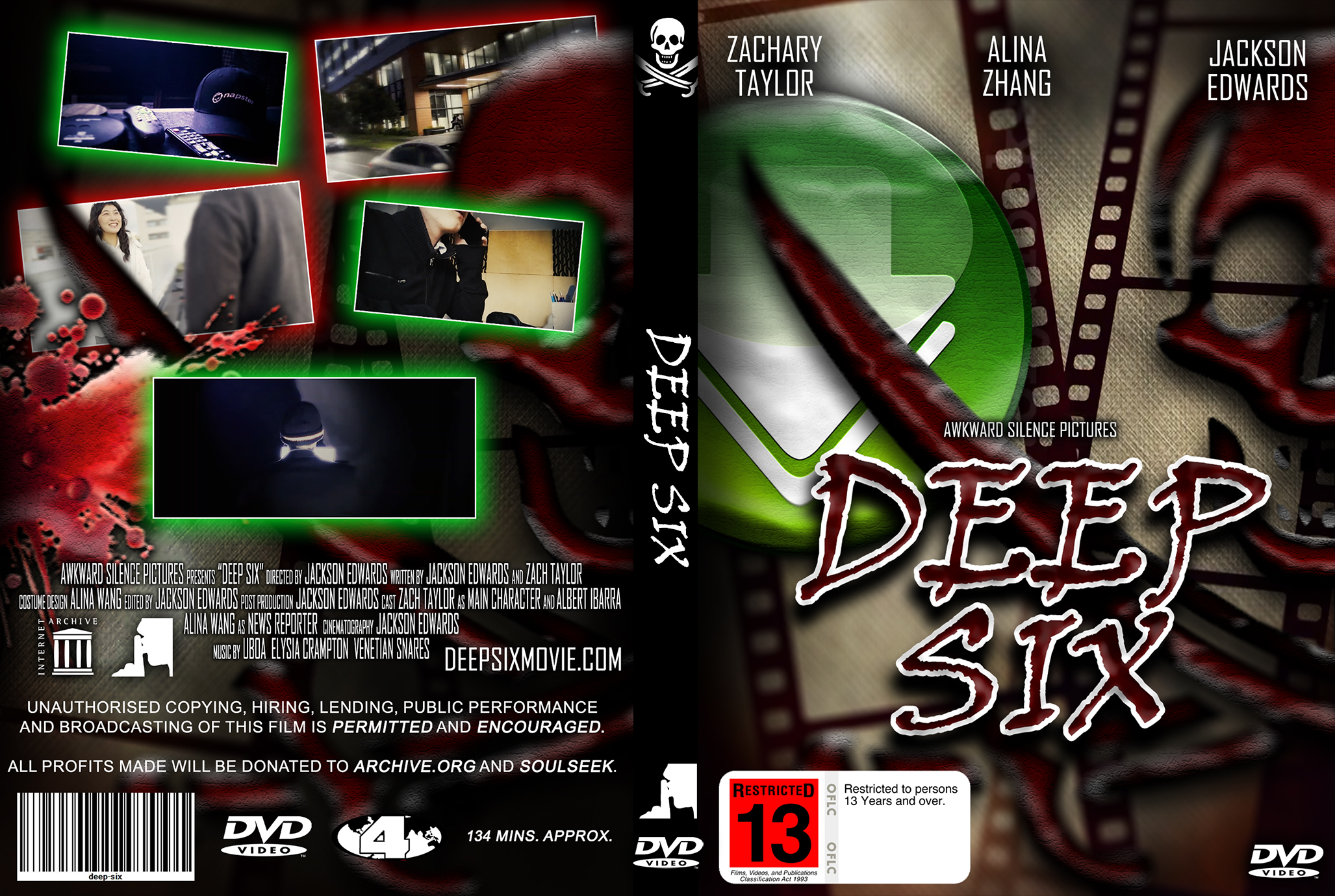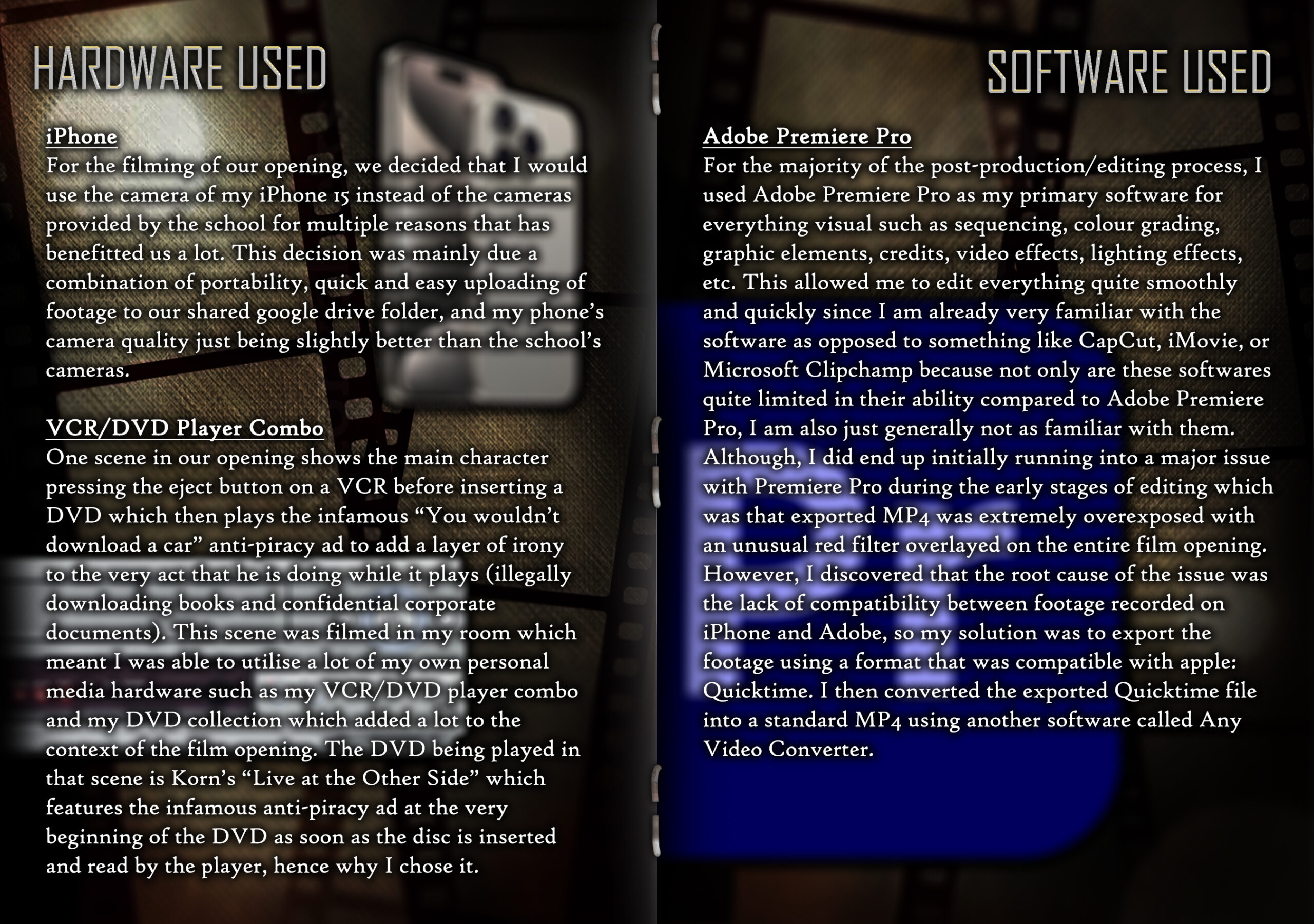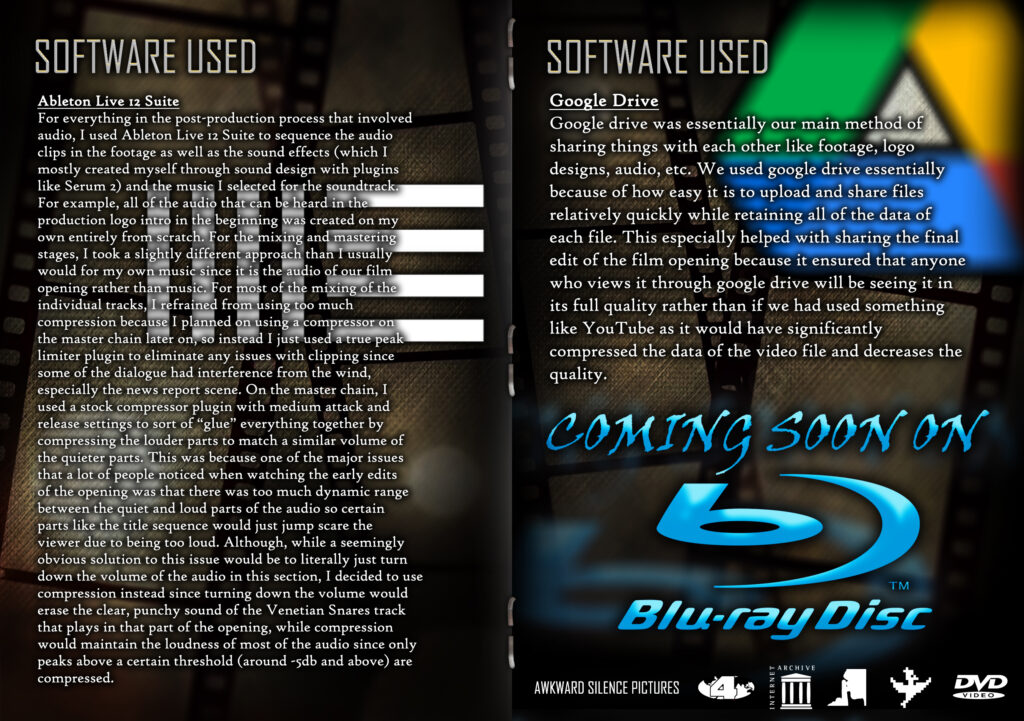Question 1: “How does your product use or challenge conventions and how does it represent social groups or issues?”
Digital format used: I produced a metalcore/post-hardcore song where the rhythm of a certain instrument (mostly the guitar or drums, both simultaneously or individually) throughout the entire song follows a morse code translation of a shortened reflective essay I wrote to answer the question. The original essay was far too long to use as the exact morse code translation in the song (the full song would’ve been over 20 minutes) so below I have attached both versions of the essay as well as a link to the song.
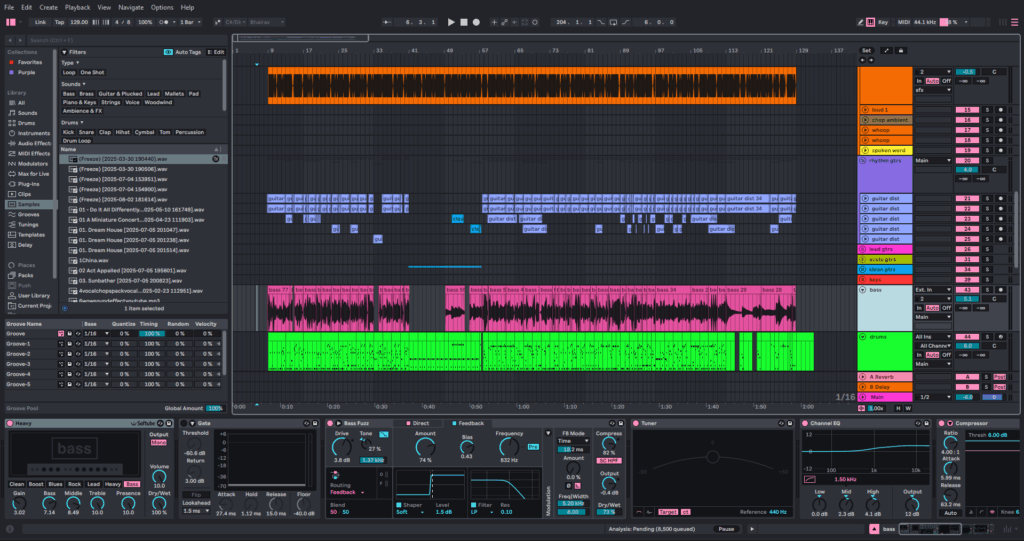
How I did it:
I used the software Ableton Live to produce, record, mix, and master the entire song. I wrote all the music myself and recorded everything except the drums using my own guitar and bass through my Focusrite Scarlett audio interface connected to my laptop. This was quite difficult because I had to memorize the rhythm of the morse code for each section of the song which is about 15-20 seconds long each, then play and record a guitar/bass part that matched that rhythm as closely as possible in a single take (which took a while to get perfect). For the drums I manually inputted each individual drum hit into a custom drum machine which I created myself to sound like a real drum kit, also following that morse code rhythm. For the morse code recording itself that can be heard in the background, I used an old website that converts text into morse code to convert my shortened essay into an audio track containing the morse code translation. After spending a lot of time re-warping the audio file so it actually follows a consistent tempo, I then used it as the basis for the rhythm of the entire song.
<– screenshot of the Ableton Live session of the song
Song:
https://drive.google.com/file/d/1X7zOA5vFYbjJHpyQWkyjgI4NbFcavzAz/view?usp=sharing
Morse code from the song:
— .- .. -. / – …. . — . —… / – .– — / — .- .. -. / … — -.-. .. .- .-.. / .. … … ..- . … —… / -.. .. –. .. – .- .-.. / .–. .. .-. .- -.-. -.– –..– / .- .. .-.-.- / … — -.-. .. .- .-.. / –. .-. — ..- .–. —… / -. . ..- .-. — -.. .. …- . .-. –. . -. -.-. . / -….- / .–. — .-. – .-. .- -.– . -.. / – …. .-. — ..- –. …. / -. — -. …- . .-. -… .- .-.. / — .- .. -. / -.-. …. .- .-. .- -.-. – . .-. / .– .. – …. / .- ..- – .. … — / -….- / …. .- … / … .–. . -.-. .. .- .-.. / .. -. – . .-. . … – / — ..-. / .-. . .- -.. .. -. –. / .-.-. / -.. .. –. .. – .- .-.. / .- .-. -.-. …. .. …- .- .-.. / -….- / … .. –. -. .. ..-. .. -.-. .- -. – / – — / – …. . / — .- .. -. / – …. . — . / -… . -.-. .- ..- … . / — ..-. / …. — .– / .- .. / .. … / – .. . -.. / – — / -.-. .- .–. .. – .- .-.. .. … — / .- -. -.. / .- -. – .. -….- .. -. – . .-.. .-.. . -.-. – ..- .- .-.. .. … — / -… -.– / .–. .-. .. — .-. .. – .. … .. -. –. / . ..-. ..-. .. -.-. .. . -. -.-. -.– / .- -. -.. / .–. .-. — ..-. .. – / — …- . .-. / .- -. -.– / –. . -. ..- .. -. . / — .-. / . – …. .. -.-. .- .-.. / .– .- -.– / — ..-. / — -… – .- .. -. .. -. –. / .- -. / . -. -.. / .-. . … ..- .-.. –
Exact translation of morse code:
“Main theme: two main social issues: digital piracy, AI.
Social group: neurodivergence – portrayed through nonverbal main character with autism – has special interest of reading + digital archival – significant to the main theme because of how AI is tied to capitalism and anti-intellectualism by prioritising efficiency and profit over any genuine or ethical way of obtaining an end result”
Original essay before shortened:
Our film opening represents many social groups/issues. The main theme revolves around a ‘crime vs crime’ situation between two main social issues: digital piracy, and AI.
One of the main social groups our opening represents is neurodivergence which is portrayed through the main character who has autism and is non-verbal. The main character’s special interest of reading and archiving knowledge in the form of non-fiction texts contributes significantly to the opening’s messages and ideas being portrayed. This is because of how AI is inherently tied to capitalism and anti-intellectualism as it prioritises efficiency and profit over any genuine or ethical way of obtaining an end result (e.g. AI generated “art”, people using AI to make decisions for them instead of thinking for themselves, etc). Our decision to write the main character as someone who is focused on the archival and preservation of non-fiction books, texts, and documents contrasts with this, as reading is known as essentially a symbol of knowledge and intelligence, which is the complete opposite of many issues surrounding AI.
We wanted to portray this in a metaphorical but more literal way, shown when the main character discovers Health AI’s exploitative and unethical psychological experiments used to train their new AI model. This represents the actual people in real life who are continuously affected by AI, such as those losing their jobs, artists, and practically anyone who relies on it so much to the point where they cannot think or function properly without the help of AI.
All of this makes the audience question the moral justification of AI as well as digital piracy used for the purpose of archiving knowledge, particularly in our opening where it is used in such a way to expose a corrupt billionaire CEO who is exploiting real human beings.
Question 2: “How does your product engage with audiences and how would it be distributed as a real media text? “
Digital format used: I created a promotional clip reminiscent of those that appear before the beginning of a film on a VHS tape using Adobe Premiere Pro. For the background, I edited some old archived stock CGI test footage from the 90s, and layered text over the top that answers the question, separated into 3 sections: Audience, Distribution, and Emotion. I took inspiration from my own VHS tapes, and had my VHS copy of the first Pirates of the Caribbean movie playing while I edited the video so I could emulate that traditional, grainy, low-quality look to the highest accuracy, which I did so using a combination of grain and chromatic filters. I also took inspiration from the unusual visuals that appear in those VCR head cleaning tapes from the 80s/90s which I have multiple of.
Video link: https://drive.google.com/file/d/1kE4-qZMXSRJyu1mSMEZO9QEdlWIZOEnM/view?usp=sharing
Screenshots from the video:
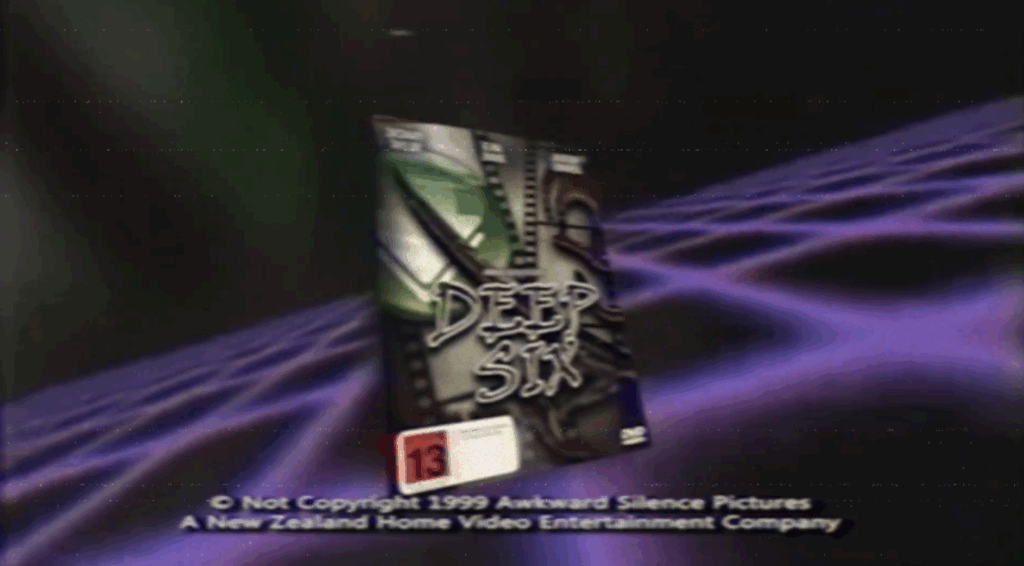
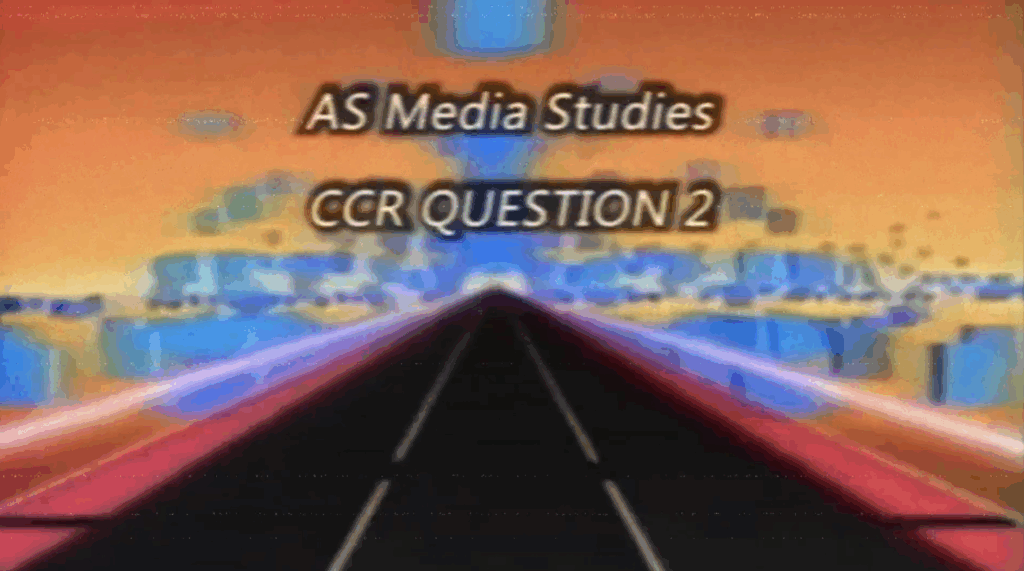
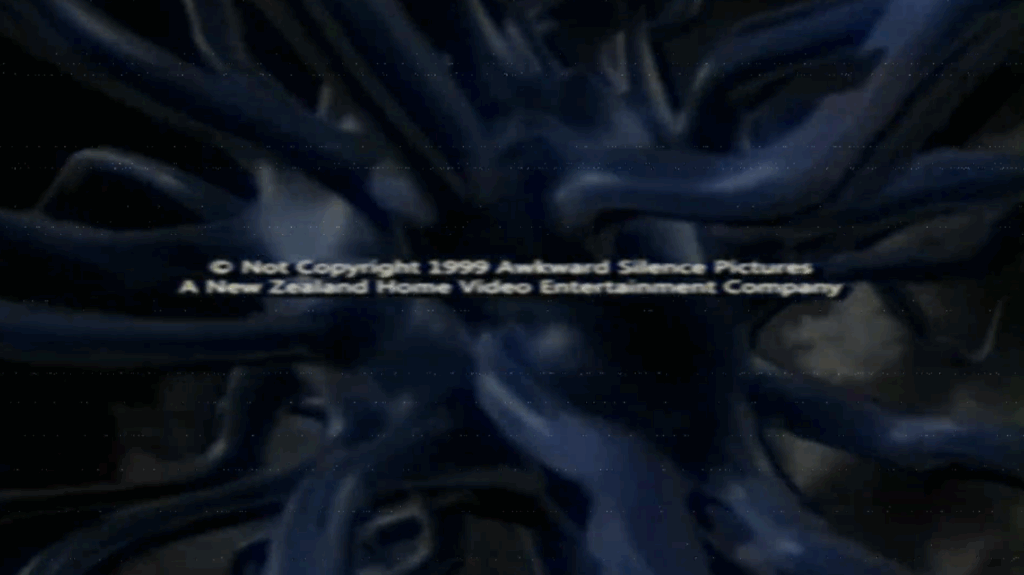
Question 3: “How did your production skills develop throughout this project?”
Digital format used: I created a fictional iOS 4 text message conversation between two teenagers in 2010 with “screenshots” that show the messages between “me” (blue text on the right), and the question (white text on the left). I used Photoshop for this and wrote the messages in a way that replicates an actual text message conversation between two teenagers in 2010 with small details like common internet slang from that time and emoticons.
Question 4: “How did you integrate technologies – software, hardware and online – in this project?”
Digital format used: I designed a DVD insert/booklet using Photoshop to answer the question with a paragraph for each piece of software and hardware formatted in a way that replicates the text in an actual DVD booklet.
